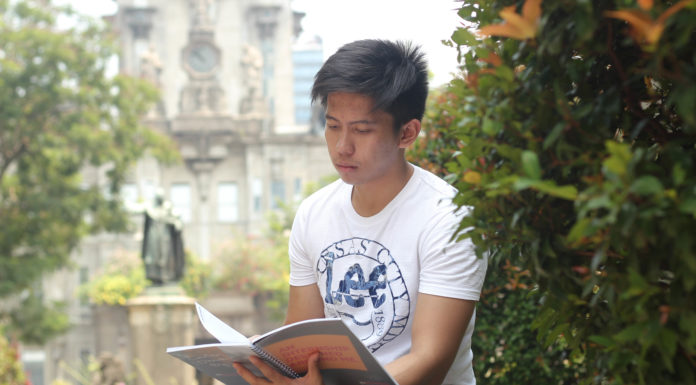A SOCIAL Weather Stations (SWS) survey that showed a decline in the number of churchgoers in the Philippines is being questioned because of its methodology and timing.
The opinion poll, conducted last Feb. 15 to 17, showed that 9.2 percent or one out of every 11 Filipino Catholics had thought of leaving the Church. The rate of people who attend Mass has also decreased, to 37 percent this year compared with 64 percent in 1991, SWS said.
The percentages of Catholics who sometimes think of leaving the Church were “5.4 percent among weekly churchgoers, 7.1 percent among those who attend several times a month, 12.9 percent among those who attend once a month, 14.5 percent among those who attend several times a year and 18.0 percent among those who attend once a year at most,” SWS said in its April 7 press release titled “9% of Catholics Sometimes Think of Leaving the Church.”
Asst. Prof. Alicia Villamil from the Faculty of Pharmacy doubted the accuracy of the poll, claiming its procedures were limited.
“How [do we] define religiosity? Could we rely on the self-assessment of respondents as to [setting judgment] on their religiosity? What then, is the meaning of ‘leaving the Church’?” said Villamil, a socio-anthropology professor, in an e-mail to the Varsitarian.
Catholics were considered the least religious, with only 29 percent regarding themselves as “deeply religious,” according to SWS. Meanwhile, 50 percent of Protestants, 43 percent of members of Iglesia ni Cristo and 41 percent from other Christian denominations described themselves as deeply religious.
SWS first asked the question regarding Church attendance in 1991, reporting a 66-percent weekly Church attendance rate among Filipinos.
SWS surveys have smaller sample sizes, at 1,200, compared with those of overseas polling agencies like the Pew Research Center, which uses polls to draw out public opinion and conducts “demographic researches” and other studies on “empirical social science.”
Pew wrote a study in 2009 titled “Faith in Flux: Changes in the Religious Affiliation in the US” in relation to the number of American Catholics leaving the Church, those who had switched to other religions, and those who were not affiliated with any religion. It had over 10,000 respondents.
‘Leading’ questions
Rizalito “Lito” David, a socio-political analyst who ran for senator in the May 13 polls, said the phrasing of survey questions must be cross-checked to yield a valid and scientific conclusion.
“Once you have stated the questions and fixed them all, and checked the external [and] internal validity, [the questionnaire] will have to undergo a pre-test again before you throw it to those who will conduct the survey, [which are] the field people,” he said.
In the first three questions asked by SWS, the participants were of different religions.
The first question asked the respondents to describe their level of religiosity. The second question was on the frequency of the Church attendance, while the third asked for a comparison of their attendance in religious services at present and five years ago.
The last question, which asked how much they agree or disagree with the statement, “Sometimes, I think I might leave the Catholic Church,” only Catholics were requested to respond.
David said the fourth question was a “leading question,” which he defined as stating a query in a way that would direct the respondent to an answer that the researcher wanted to draw out.
“[A leading question] is prohibited in a scientific research. Questions like that are not drawn out using one question only, [which is] ‘Do you want to leave the [Catholic Church]?’ You could find out more of that if you become more in-depth with your questioning,” said David, a former survey practitioner at the University of the Philippines-Los Baños.
Meanwhile, Villamil cited some factors that must be considered in making valid survey questions.
“[Survey] questions should be specific, definite, [and] adapted to the level of knowledge of the respondents. They should be able to arouse the interest [of the subjects] and should be in the proper social context,” Villamil said.
SWS and other survey firms like Pulse Asia should also provide the public with information on survey procedures and the raw data used, David said.
“[Show] us your methodology. Were the questions subjected to the tests done in order to make valid survey questions? However, [until now], they have not been responding,” David said.
The Varsitarian tried to get the side of SWS President Mahar Mangahas, but he was not available as of press time.
‘Not a cause of worry’
Msgr. Jose Clemente Ignacio, parish priest of the Minor Basilica of the Black Nazarene, rejected the findings of the survey, saying that as far as the clergy were concerned, the number of churchgoers was increasing.
“As all the priests have observed, there is an increase in the Mass-goers in the different Churches in the country,” Ignacio said in a phone interview.
The timing of the release of the survey ahead of the election period, meanwhile, was meant to “cast doubt” on the strength of the Church and its influence in delivering the “Catholic Vote,” David claimed.
Cebu Archbishop Jose Palma, president of the Catholic Bishops’ Conference of the Philippines (CBCP), said the Church paid “very little” attention to the survey results. He said priests from other countries had praised the way Catholicism is practiced in the Philippines. In Cebu, many pastors from other religions are converting to Catholicism, he said.
“There are not so many [Catholics] converting to Pentecostals and evangelicals. They (foreign priests) were saying [their] congratulations to us. That’s another point to ponder upon,” Palma told the Varsitarian.
Palma said Catholics who had thought of leaving the Church might not really be Catholics in practical terms, but only in name.
“People say they are leaving the Church, but in the first place they are not even within the Church and therefore they can’t be really described as leaving the Church,” he said.
The debate over the Reproductive Health (RH) law, and proposals to legislate same-sex marriage and divorce made many Catholics fight for their faith, Palma added.
Ignacio said the Catholic Church should instead dwell on the good insights that could be drawn from the survey results.
“Let’s learn from what good can come out from it. We Catholics, let’s be more serious about our faith. Church leaders should become more vibrant [and] improve [their] leadership and evangelization,” Ignacio added.
Villamil echoed Palma in saying that although Catholics have different views, they many remain loyal to their faith.
“So many Catholics have been responsive to the call of the Church. If Church attendance would be a measure, then why do we see crowded churches on Sundays [and] even during late masses?”
















